
METALLURGICAL AND MATERIALS TRANSACTIONS A-PHYSICAL METALLURGY AND MATERIALS SCIENCE
Scope & Guideline
Bridging Theory and Application in Metallurgical Research
Introduction
Aims and Scopes
- Physical Metallurgy:
Research on the transformation of materials under various conditions, including phase changes, microstructural evolution, and mechanical properties. - Materials Characterization:
Techniques and methodologies for analyzing the properties and behaviors of materials, such as microscopy, X-ray diffraction, and electron microscopy. - Alloy Development:
Investigations into the design and optimization of new alloy systems, including high-entropy alloys and superalloys, to improve performance under extreme conditions. - Additive Manufacturing and Processing Techniques:
Exploration of innovative manufacturing methods such as 3D printing and laser processing, focusing on their effects on microstructure and material properties. - Corrosion and Wear Resistance:
Studies aimed at understanding and enhancing the durability of materials in corrosive environments, crucial for applications in industries such as aerospace and automotive. - Mechanical Behavior of Materials:
Research into the mechanical properties of materials, including tensile, fatigue, and fracture behaviors, to predict performance in real-world applications. - Computational Materials Science:
Utilization of computational approaches, including modeling and simulation, to predict material behavior and guide experimental investigations.
Trending and Emerging
- High-Entropy Alloys (HEAs):
Research into HEAs is on the rise due to their unique properties and potential applications in extreme environments, prompting extensive studies on their mechanical and thermal behavior. - Additive Manufacturing and 3D Printing:
The integration of additive manufacturing technologies is rapidly growing, with research focusing on optimizing processes and understanding the resulting microstructural changes. - Sustainability and Biodegradable Materials:
A notable trend toward developing sustainable materials and biodegradable alloys, particularly in biomedical applications, is emerging in response to environmental concerns. - Machine Learning and AI in Materials Science:
The application of machine learning techniques for predicting material properties and behaviors is gaining traction, reflecting a shift towards data-driven research methodologies. - Advanced Coating Technologies:
Increasing focus on coatings and surface modifications to enhance corrosion resistance and wear properties, particularly for high-performance applications. - Nano-structured and Composite Materials:
Research into nano-structured materials and composites continues to grow, driven by their potential to provide superior mechanical properties and functionalities. - Hydrogen Embrittlement Studies:
There is an increasing emphasis on understanding hydrogen embrittlement mechanisms in various alloys, particularly in light of the growing use of hydrogen as an energy carrier.
Declining or Waning
- Traditional Ferrous Metallurgy:
Interest in conventional ferrous metallurgy has diminished as research shifts towards advanced materials and processing techniques, particularly in non-ferrous and high-entropy alloys. - Basic Alloy Composition Studies:
Research focused solely on the basic composition of alloys without considering processing or application aspects is decreasing, as there is a growing emphasis on understanding the full material lifecycle. - Static Mechanical Testing:
While still relevant, there is a noticeable decrease in studies centered solely on static mechanical testing without accompanying microstructural analysis or advanced characterization methods. - Conventional Heat Treatment Methods:
Research on traditional heat treatment processes is waning as innovative thermal and mechanical processing techniques gain more attention in enhancing material properties. - Empirical Material Studies:
There is a declining trend in purely empirical studies that do not incorporate computational modeling or theoretical frameworks, as the field moves towards a more integrated approach.
Similar Journals
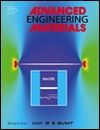
ADVANCED ENGINEERING MATERIALS
Unlocking the Potential of Innovative MaterialsADVANCED ENGINEERING MATERIALS is a leading journal dedicated to the field of materials science, particularly within the realm of condensed matter physics. Published by WILEY-V C H VERLAG GMBH in Germany, this esteemed journal has been a crucial platform for disseminating cutting-edge research since its inception in 1999. With an impressive impact factor and ranked in the top quartiles of its categories, it boasts a Q1 ranking in Condensed Matter Physics and a Q2 rank in related materials science fields as of 2023. ADVANCED ENGINEERING MATERIALS serves a diverse readership, including researchers, industry professionals, and students, striving to advance the understanding and application of innovative materials. Frequent contributions to this journal help bridge theoretical advancements with practical applications, fostering a vibrant academic and industrial dialogue. Although currently not an open-access journal, the insights shared within its pages are pivotal for anyone engaged in the dynamic sectors of engineering and material sciences.

MATERIALS SCIENCE AND TECHNOLOGY
Connecting Academia and Industry through Materials InsightsMATERIALS SCIENCE AND TECHNOLOGY is a leading journal published by SAGE PUBLICATIONS INC, focusing on the interdisciplinary advancements in the field of materials science. Since its inception in 1984, the journal has provided a platform for researchers and industry professionals to present innovative findings through rigorous peer-reviewed articles. The journal holds a commendable impact factor and categorizes itself within the prestigious Q2 rank in various domains such as Condensed Matter Physics, Materials Science, Mechanical Engineering, and Mechanics of Materials according to the 2023 Quartiles. With no Open Access option, it primarily serves as a repository for in-depth studies and advancements that push the boundaries of materials engineering and application. Located in the United Kingdom, at 2455 TELLER RD, THOUSAND OAKS, CA 91320, the journal continues to attract a global readership, making it indispensable for academics, researchers, and students who aim to stay at the forefront of materials innovation.
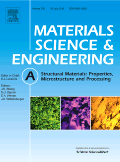
MATERIALS SCIENCE AND ENGINEERING A-STRUCTURAL MATERIALS PROPERTIES MICROSTRUCTURE AND PROCESSING
Advancing the Frontiers of Materials ScienceMATERIALS SCIENCE AND ENGINEERING A-STRUCTURAL MATERIALS PROPERTIES MICROSTRUCTURE AND PROCESSING, published by ELSEVIER SCIENCE SA, is a highly regarded journal specializing in the fundamental and applied aspects of materials science. Since its inception in 1988, this journal has established itself as a leading platform for disseminating innovative research findings, particularly focused on structural materials, their properties, microstructure, and processing techniques. With a prominent impact in the field, it ranks in the Q1 category across several disciplines including Condensed Matter Physics, Materials Science, Mechanical Engineering, and Nanoscience and Nanotechnology, highlighting its significance and influence within the academic community. The journal is accessible to a global audience of researchers, professionals, and students, underscoring its commitment to advancing knowledge in materials engineering. Aspiring authors and readers will find this journal an essential resource for cutting-edge research and the latest advancements in the field, further supported by its impressive Scopus rankings that place it among the top-tier publications.

Uspekhi Fiziki Metallov-Progress in Physics of Metals
Advancing the Frontiers of Metal PhysicsUspekhi Fiziki Metallov - Progress in Physics of Metals, published by the G V KURDYUMOV INST METAL PHYSICS NAS UKRAINE, is a distinguished open-access journal that has been advancing the field of metal physics since 2000. With an ISSN of 1608-1021 and E-ISSN of 2617-0795, this journal is pivotal for disseminating rigorous research findings and innovations across diverse subfields including Condensed Matter Physics, Electronic, Optical and Magnetic Materials, and Fluid Flow and Transfer Processes. The journal's strong impact, reflected in its Q2 and Q3 quartile rankings across several categories and a commendable Scopus ranking, places it at the forefront of materials science and engineering. Researchers, professionals, and students can benefit from its rich repository of high-quality articles aimed at fostering knowledge and collaboration in metal physics. With an accessible repository and commitment to the open-access model, Progress in Physics of Metals strives to make significant contributions to the global scientific community, shaping the future of metal-based research.

Metallography Microstructure and Analysis
Innovating Insights into Microstructural AnalysisWelcome to Metallography Microstructure and Analysis, a prominent journal dedicated to the exploration of microstructural properties and their implications in metallic materials. Published by SpringerNature, this journal stands at the forefront of research in the field of materials science, particularly focusing on metals and alloys. With an impressive Q2 ranking in 2023 within its category and a Scopus rank of #72 out of 176, it continues to provide significant contributions to the understanding of metallography, attracting diverse readership among researchers, industry professionals, and students alike. The journal spans a converged period from 2012 to 2024, ensuring it captures the evolving landscape of metallurgical studies. Although it does not currently offer open access, this platform is essential for disseminating high-quality, peer-reviewed research that fosters innovation and development in metallurgical practices.
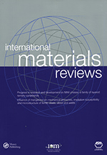
INTERNATIONAL MATERIALS REVIEWS
Transforming Research into Practical ApplicationsINTERNATIONAL MATERIALS REVIEWS, published by SAGE Publications Inc, is a leading journal dedicated to the comprehensive analysis of contemporary research in the fields of materials chemistry, mechanical engineering, mechanics of materials, and the study of metals and alloys. With an impressive impact factor and a Q1 ranking across multiple categories such as Materials Chemistry and Mechanical Engineering in 2023, it ranks amongst the top journals for innovative materials research. The journal has a long-standing history since its inception in 1987 and continues to serve as a crucial resource for academics and professionals alike. Although it is not open access, it is renowned for its rigorous peer-review process and its commitment to disseminating high-quality materials science research globally. Researchers, students, and industry professionals benefit greatly from the journal's insightful reviews, both for the advancement of theoretical knowledge and practical applications within the fast-evolving materials field.
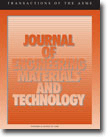
JOURNAL OF ENGINEERING MATERIALS AND TECHNOLOGY-TRANSACTIONS OF THE ASME
Exploring innovative solutions for a sustainable future.JOURNAL OF ENGINEERING MATERIALS AND TECHNOLOGY-TRANSACTIONS OF THE ASME is a premier journal published by the American Society of Mechanical Engineers (ASME), dedicated to advancing the field of engineering materials and technology. With an ISSN of 0094-4289 and E-ISSN 1528-8889, this journal has provided invaluable insights since its inception in 1973. Operating from its headquarters in New York, United States, it serves a global audience of researchers, professionals, and students alike. The journal is recognized for its rigorous peer-review process and its commitment to disseminating high-quality research, currently holding a Q3 quartile ranking across multiple categories including Condensed Matter Physics, Materials Science, Mechanical Engineering, and Mechanics of Materials. With a focus on exploring innovative materials and their applications, it aims to foster collaboration and discovery in the engineering community. Although it is not an open-access journal, it continues to play a vital role in shaping the future of engineering materials research up to 2024. Researchers and practitioners will find in this journal a significant platform to support the development and understanding of engineering materials, making contributions that resonate through academia and industry.
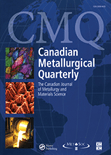
CANADIAN METALLURGICAL QUARTERLY
Exploring the Depths of Metallurgical Engineering.Canadian Metallurgical Quarterly is a prestigious scholarly journal published by Taylor & Francis Ltd, dedicated to the field of metallurgical engineering and materials science. With a rich history dating back to its inception in 1962 and continuing through its most recent publications, this journal serves as a vital platform for the dissemination of innovative research, advancements, and critical reviews in metallurgy, metals, and alloys. Positioned strategically within the academic community, it holds a significant impact factor and is currently rated in the Q2 category for Metals and Alloys, and Q3 in Industrial and Manufacturing Engineering as of 2023, showcasing its authoritative role in these disciplines. Although it does not offer open access, the journal remains widely recognized for its rigorous peer-review process, ensuring that published work adheres to the highest standards of scientific quality. Researchers, professionals, and students alike will find invaluable insights and contributions that drive the field forward.

JOURNAL OF MATERIALS ENGINEERING AND PERFORMANCE
Elevating Standards in Mechanical Engineering ResearchJOURNAL OF MATERIALS ENGINEERING AND PERFORMANCE, published by Springer, serves as a vital resource for researchers and professionals in the fields of materials science, mechanical engineering, and mechanics of materials. With an ISSN of 1059-9495 and E-ISSN of 1544-1024, this journal boasts a commendable track record since its inception in 1992 and is set to continue providing valuable insights until 2024. Positioned in the Q2 quartile of its categories, the journal is ranked #246 in Mechanical Engineering and #168 in Mechanics of Materials according to Scopus, reflecting its commitment to high-quality research. While currently not adopting an open access model, it remains accessible to academic professionals and students eager to advance their knowledge in the rapidly evolving domain of materials engineering. The scope encompasses innovative research focused on material performance, engineering applications, and technological advancements, making it an indispensable tool for those at the forefront of the field.

METALLURGICAL AND MATERIALS TRANSACTIONS B-PROCESS METALLURGY AND MATERIALS PROCESSING SCIENCE
Shaping the Future of Materials Science Through Rigorous ResearchMETALLURGICAL AND MATERIALS TRANSACTIONS B-PROCESS METALLURGY AND MATERIALS PROCESSING SCIENCE, published by Springer, serves as a pivotal platform in advancing the field of materials science, focusing specifically on the intricacies of process metallurgy and materials processing. With an ISSN of 1073-5615 and an E-ISSN of 1543-1916, this esteemed journal boasts an impressive standing with its 2023 category quartiles, ranking Q2 in Condensed Matter Physics, Materials Chemistry, and Mechanics of Materials, while achieving a top-tier Q1 classification in Metals and Alloys. Positioned in the United States, the journal has been publishing leading research since its inception, with converged years spanning from 1973 to 1979 and 1995 to 2024. The journal's robust impact within its fields is reflected in its Scopus rankings, notably ranking #42 out of 176 in Materials Science with a 76th percentile. Though not an open access journal, its comprehensive and high-quality research articles cater to the needs of researchers, professionals, and students, ensuring they remain at the forefront of advancements in metallurgy and materials processing science.